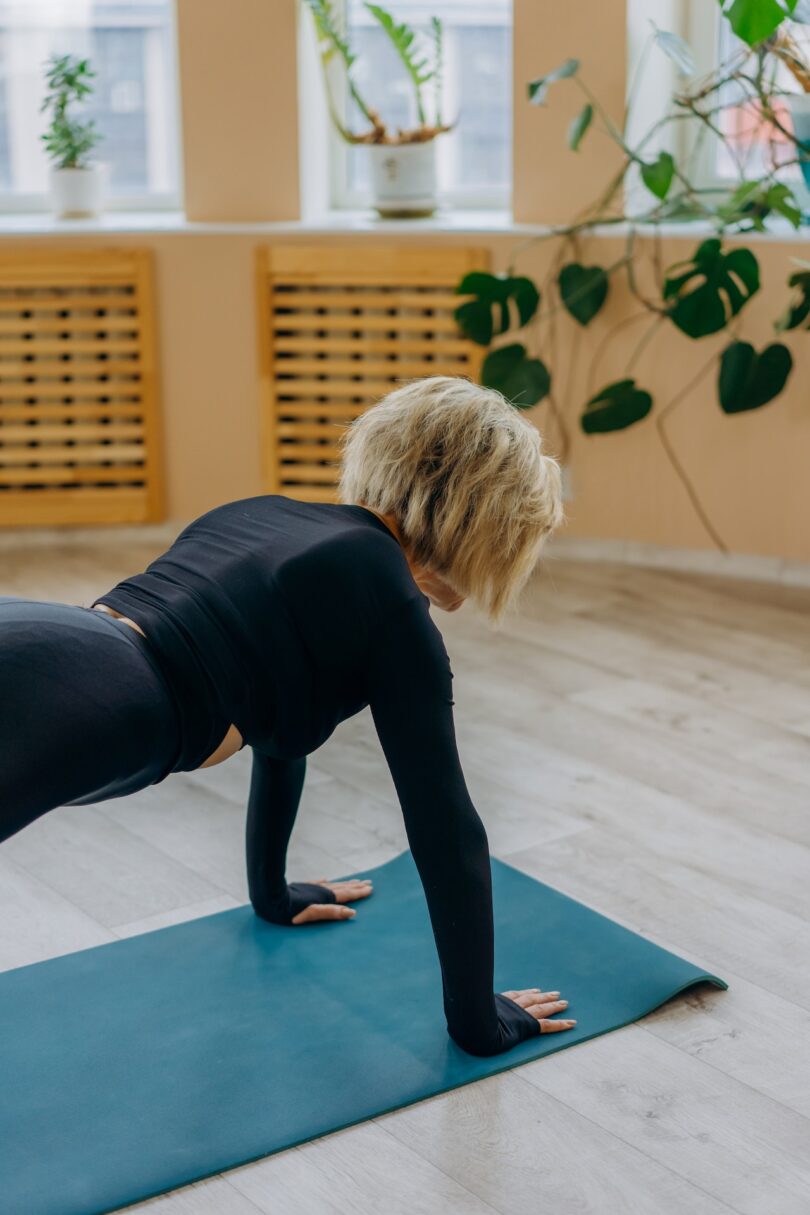As we age, it can become increasingly important to maintain our physical and mental well-being. Yoga is a great way for seniors to improve flexibility, balance, and overall health. However, it’s important to approach yoga with caution and make modifications as necessary to avoid injury. This guide will provide tips for getting started with yoga as a senior.
Benefits of Yoga for Seniors
Yoga is a low-impact form of exercise that can help seniors improve balance, flexibility, and strength. In addition to physical benefits, yoga has been found to improve mental well-being and reduce stress. Here are a few specific benefits that seniors may experience from practicing yoga:
- Improved balance: Yoga poses such as the tree pose and warrior III can help improve balance, which can reduce the risk of falls.
- Increased flexibility: Yoga poses stretch the muscles and joints, which can help increase flexibility and reduce stiffness.
- Increased strength: Yoga poses such as the downward facing dog and plank can help build strength in the arms, legs, and core.
- Reduced stress: Yoga promotes relaxation and mindfulness, which can help reduce stress and improve overall well-being.
Getting Started with Yoga
Before you begin a yoga practice, it’s important to check with your doctor to make sure that yoga is safe for you. Once you have the green light, here are a few tips for getting started:
- Start with a beginner class: Look for a yoga class that is specifically designed for seniors or beginners. These classes will typically move at a slower pace and include modifications for those who need them.
- Invest in a good yoga mat: A good yoga mat will provide cushioning and grip, which can make poses more comfortable and reduce the risk of injury.
- Wear comfortable clothing: Wear clothing that is comfortable and allows you to move freely. Avoid clothing that is too tight or restrictive.
- Listen to your body: Yoga should never be painful. If you experience pain during a pose, stop and come out of the pose.
Modifying Yoga Poses
As a senior, it may be necessary to modify yoga poses to avoid injury. Here are a few tips for modifying poses:
- Use props: Props such as blocks and blankets can help make poses more accessible. For example, a block can be used to help reach the floor in forward folds, and a blanket can be used to cushion the knees in seated poses.
- Use a chair: Many yoga poses can be done seated in a chair. This can be a great option for those who have difficulty getting up and down from the floor.
- Don’t push too hard: It’s important to listen to your body and not push too hard. Yoga should be challenging, but not painful.
Conclusion
Yoga can be a great form of exercise for seniors. It can improve flexibility, balance, and overall well-being. However, it’s important to approach yoga with caution and make modifications as necessary to avoid injury. If you’re a senior interested in starting a yoga practice, look for a beginner class and don’t be afraid to use props or a chair to make poses more accessible. Remember to listen to your body and never push too hard. Happy yoga!
Read more :
- The 3 best yoga straps for senior
- Yoga for seniors: community classes and the social benefits
- The 5 Best Yoga Swing | Yoga Trapeze for Seniors








Leave a Comment